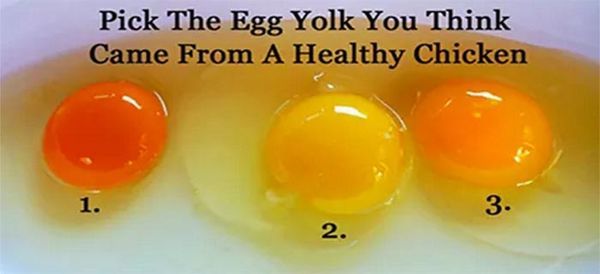Cooking with eggs is a timeless tradition in many kitchens. Whether you’re whipping up a cake or scrambling some eggs, it’s important to start with high-quality eggs that come from healthy chickens. Thankfully, there are simple ways to determine the quality of an egg before incorporating it into your favorite recipes.

Decoding the Yolk’s Color
Have you ever noticed that most eggs have a yellow yolk? We often associate this hue with a healthy egg. However, the color of the yolk can actually vary depending on the chicken’s diet.
Free Range vs Store-Bought
Chickens fall into two main categories: free-range and those raised for commercial purposes. Eggs from store-bought chickens usually have yellow yolks. While this is generally considered a good color, there’s an even better indicator of a healthy egg.
The Bright Orange Yolk: A Sign of Good Health
A vibrant, bright orange yolk is a fantastic sign that the chicken has been enjoying a diet rich in vitamins and nutrients. This color conveys the chicken’s healthier life, leading to a higher quality egg. So, when it comes to yolks, remember, orange is the new yellow!
Watch Out for Dark Yolks
If you come across a yolk that is dark in color, it may be an indication that the chicken lacks certain essential nutrients in its diet. While it’s not necessarily unsafe to consume eggs with dark yolks, it’s generally best to opt for eggs with brighter yolks to ensure you’re receiving a maximum amount of nutrients.





